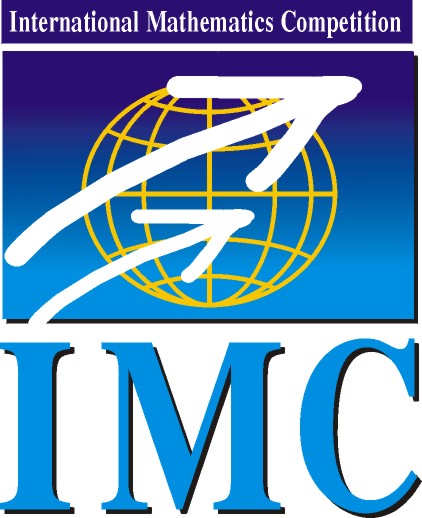
|
International Mathematics Competition
|
IMC 2026 |
| Information | Schedule | Problems & Solutions | Results | Contact |
IMC2024: Day 1, Problem 1
Problem 1. Determine all pairs \(\displaystyle (a,b) \in \mathbb{C} \times \mathbb{C}\) satisfying
\(\displaystyle |a| = |b| = 1 \quad \text{and} \quad a + b + a\overline{b} \in \mathbb{R}. \)
Mike Daas, Universiteit Leiden
Solution 1. Write \(\displaystyle a = e^{ix}\) and \(\displaystyle b = e^{iy}\) for some \(\displaystyle x,y \in [0, 2 \pi )\). Using Euler's formula, and the well-known identities
\(\displaystyle \sin x + \sin y = 2\sin\frac{x+y}{2} \cos\frac{x-y}{2} \quad \text{and} \quad \sin x = 2\sin\frac{x}{2}\cos\frac{x}{2}, \)
we get a product form of the left-hand side as
$$\begin{align*} \mathrm{Im}\,\Big(a + b + a\overline{b}\Big) &= \big(\sin x+\sin y\big) +\sin(x-y) \\ &= 2\sin\frac{x+y}{2}\cos\frac{x-y}{2} + 2\sin\frac{x-y}{2}\cos\frac{x-y}{2} \\ &= 2\bigg(\sin\frac{x+y}{2}+\sin\frac{x-y}{2}\bigg) \cos\frac{x-y}{2} \\ &= 4\sin\frac{x}{2} \cdot \cos\frac{y}{2} \cdot \cos\frac{x-y}{2}. \end{align*}$$Hence, \(\displaystyle a + b + a\overline{b}\) is real if and only if either \(\displaystyle \sin\tfrac{x}{2}=0\), \(\displaystyle \cos\tfrac{y}{2}=0\) or \(\displaystyle \cos\tfrac{x-y}{2}=0\), which respectivelly correspond to \(\displaystyle x=2k\pi\), \(\displaystyle y=(2k+1)\pi\) and \(\displaystyle x=y+(2k+1)\pi\).
Therefore, the solutions are
\(\displaystyle (1, b), \quad (a,-1) \quad\text{and}\quad (a,-a) \quad \text{with \(\displaystyle |a|=1\), \(\displaystyle |b|=1\).} \)
Solution 2. Notice that
\(\displaystyle a + b + a\overline{b} \in \mathbb{R} \iff 1 + a + b + a\overline{b} \in \mathbb{R}. \)
Let \(\displaystyle c \in \mathbb{C}\) be such that \(\displaystyle a = c^2\). Now observe that
$$\begin{align*} \overline{c}(1 + a + b + a\overline{b}) &= \overline{c} + \overline{c}c^2 + \overline{c}b +\overline{c} c^2\overline{b} \\ &= \overline{c} + c + \overline{c}b + c\overline{b} \in \mathbb{R}, \end{align*}$$where we used that \(\displaystyle \overline{c} c = 1\) and \(\displaystyle z + \overline{z} \in \mathbb{R}\) for any \(\displaystyle z \in \mathbb{C}\). W e conclude that either \(\displaystyle c \in \mathbb{R}\), or \(\displaystyle 1 + a + b + a\overline{b} = 0\). In the first case, \(\displaystyle c = \pm 1\) and so \(\displaystyle a = 1\). In the second case, we factor the equation as
\(\displaystyle (a+b)(1+\overline{b}) = 1 + a +1b + a\overline{b} = 0, \quad \text{and as such,} \quad a = -b \quad \text{or} \quad b = -1. \)
We find precisely three families of pairs \(\displaystyle (a,b)\): the pairs \(\displaystyle (1,b)\) for \(\displaystyle b\) on the unit circle; the pairs \(\displaystyle (a,-1)\) for \(\displaystyle a\) on the unit circle; and the pairs \(\displaystyle (a,-a)\) for \(\displaystyle a\) on the unit circle.
© IMC